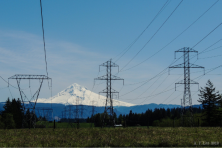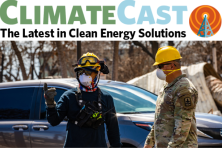Hawaii wildfires and the aftermath
Several wildfires tore across the idyllic landscape with terrifying speed on the Hawaiian island of Maui. At least 111 people have been confirmed killed, hundreds of residents have been displaced, and the historic town of Lāhainā has been destroyed. Fire investigators suspect high winds from a passing hurricane brought down power lines, setting the drought-stricken wildlands ablaze. According to the Nature Conservancy, global warming primed the wildfires by drying out the vegetation.
As survivors of the wildfires grieve and try to make sense of the devastation, they are also dealing with predatory real estate speculators, supply chain issues, and vacationers continuing to arrive on the island despite the ongoing crisis.
The wildfires have been declared a disaster by state and federal officials, and relief efforts are underway (Maui-based nonprofits have announced that monetary donations will do the most good).
The IRA one year later
The Inflation Reduction Act (IRA) turns one year old this week! This legislation is the most significant piece of federal climate legislation in U.S. history. In short, it supercharges investments into clean energy technologies to replace our reliance on fossil fuels. The Center for American Progress lays out clearly with personal stories the hope that the IRA creates with historic job growth, the boosting of small businesses, and reduced costs of prescription drug prices and energy. Insulin prices are capped at $35 under the new Medicare rules, helping an estimated 1.5 million people save on average $500 a year.
Big business sees the benefits, too. Almost a third of S&P 100 companies championed the creation of the IRA, and now $270 billion in announced investments toward clean energy projects are set to drive the creation of 170,000 new jobs.
Seen through a financial lens, this law is limitless. It doesn't limit subsidies for cleantech manufacturing and clean energy generation. The federal government projected it would spend $391 billion; Goldman Sachs said the number is closer to $1.2 trillion, with a T.
Solar and power storage companies have begun investing $100 billion as a private sector block since the passage of the IRA. By 2026, the USA will have over 17 times its current manufacturing capacity of cells, modules, wafers, inverters, and ingots, which is more than enough to supply most of the current solar projects. All eyes have also turned to the states charged with implementing many of the critical provisions within the law.
Thanks to this piece of legislation, this year has seen a race to be the climate leader around the world. The European Union put out a Green Deal Industrial Policy; Germany is investing in battery cell production, chip manufacturing, and a new hydrogen center; France is pursuing climate tax credits; and Canada is pushing for mineral extraction and EV component production alongside IRA-inspired tax credits! It is not hyperbole to say this legislation changed the course of history; it is the turning point to save the planet.
Montana’s youth climate activists strike victory
Youth climate activists in Montana scored a major legal victory when District Court Judge Kathy Seeley ruled that the State of Montana's refusal to include climate impacts in its review process of fossil fuel developments violates the state constitution, which guarantees 'the right to a clean and healthful environment.'
This case ruling refers to the issue of how to incorporate climate impacts into a public process for the Montana State Legislature, which is widely regarded as friendly to fossil fuel interests and unlikely to take meaningful action in the near future. Visit Yale Climate Connections for a detailed breakdown of the trial and verdict.
What we’re listening to:
We're about to give billions of dollars to clean hydrogen. How should we define it?
This week on What We’re Listening to, we bring you a very deep dive on Dave Robert’s Volts podcast into the Inflation Reduction Act funding of Hydrogen infrastructure and production. Electrolytic hydrogen will play an important and increasing role in sectors of the economy that are hard-to-decarbonize over the coming decades. The IRA promises funding streams for a wide variety of production methods, some cleaner than others, and $100 billion are on the line. Climate experts are raising concerns that if done wrong, these incentives for hydrogen could increase emissions instead of lower them. It all hinges on how to define “clean hydrogen.” The podcast guest Rachel Fakhry, the Policy Director of Emerging Technologies, Climate & Clean Energy Program at the Natural Resources Defense Council (NRDC), wades through these deep, wonky, critical waters.





